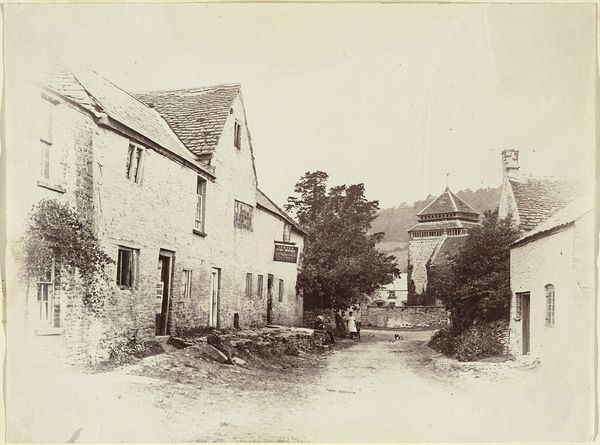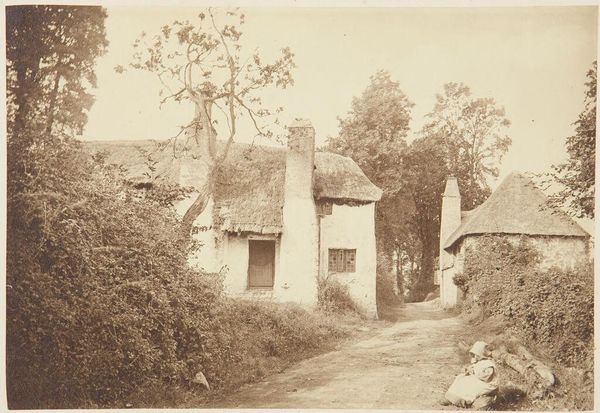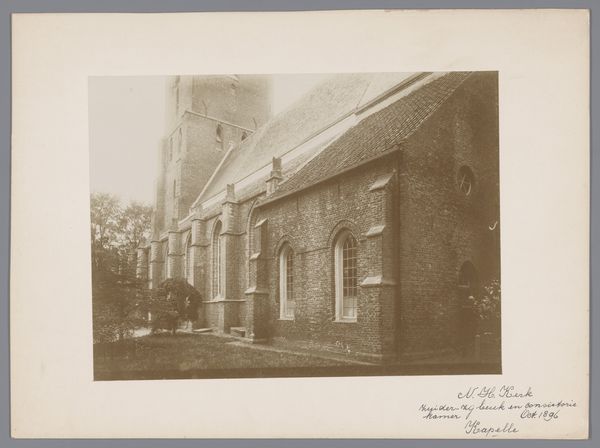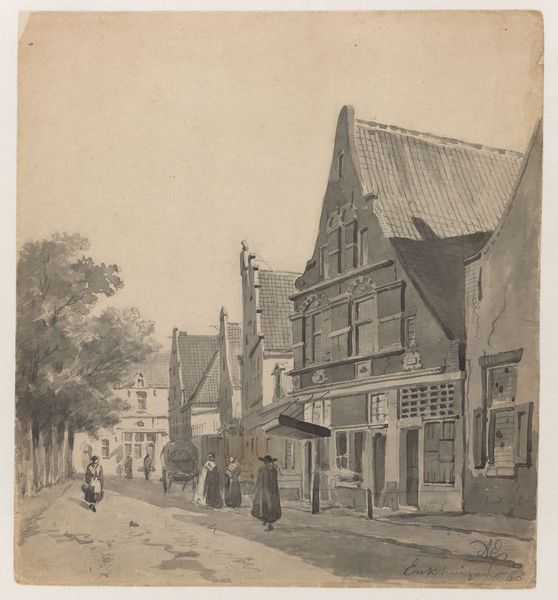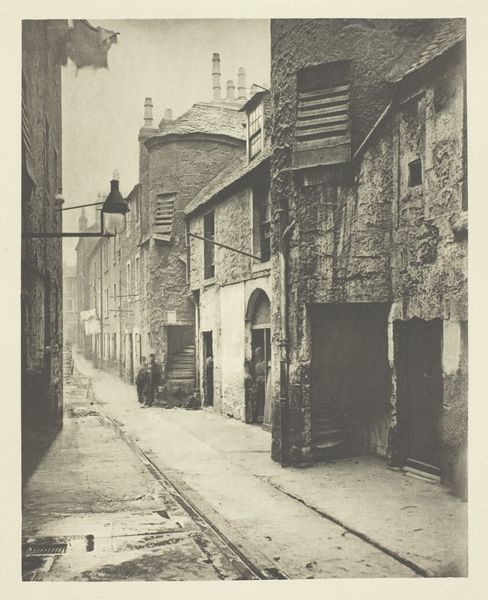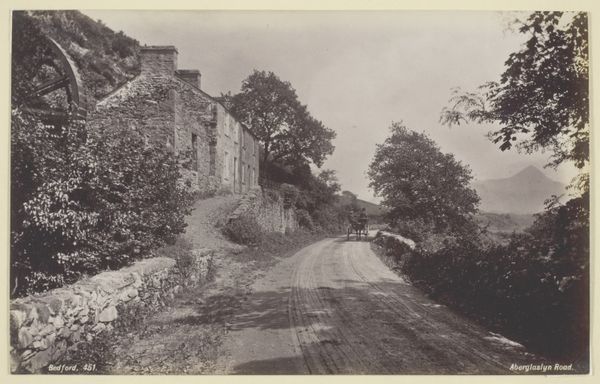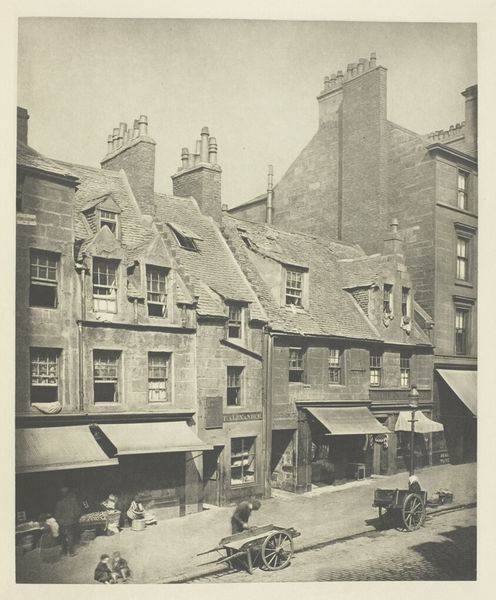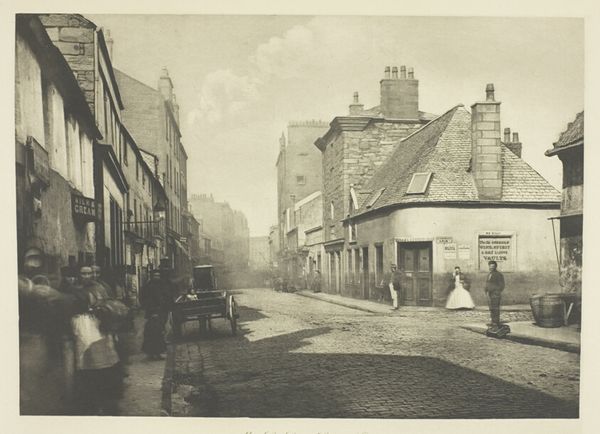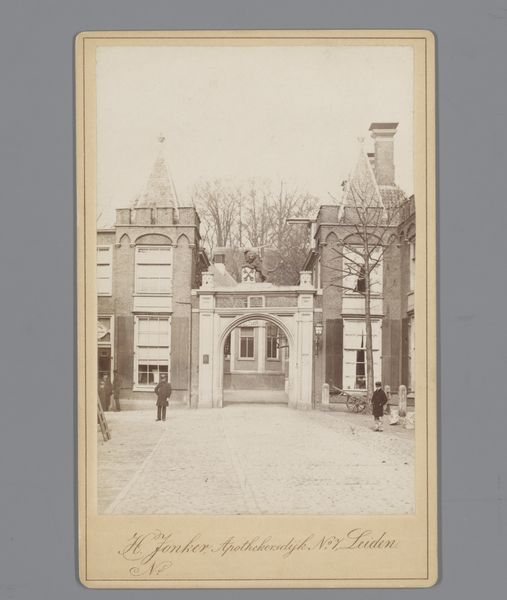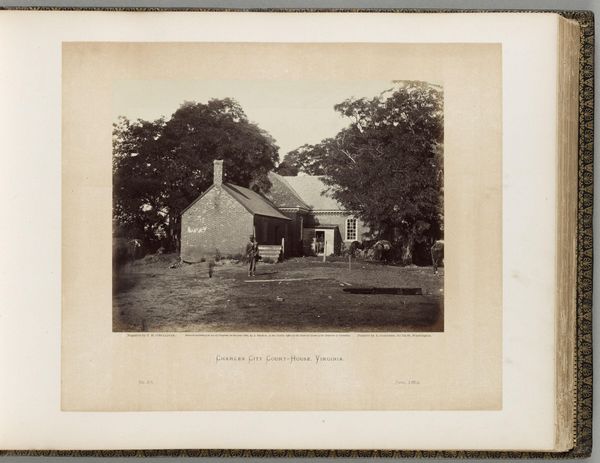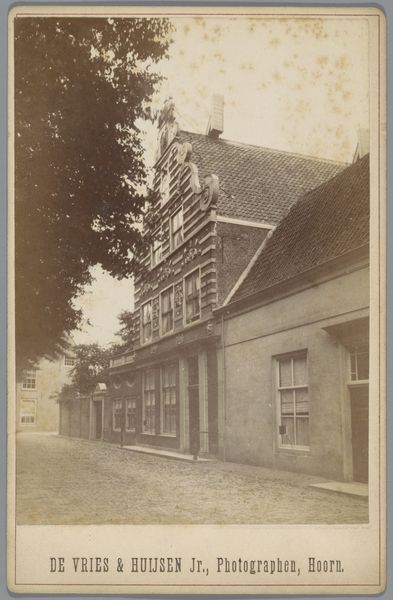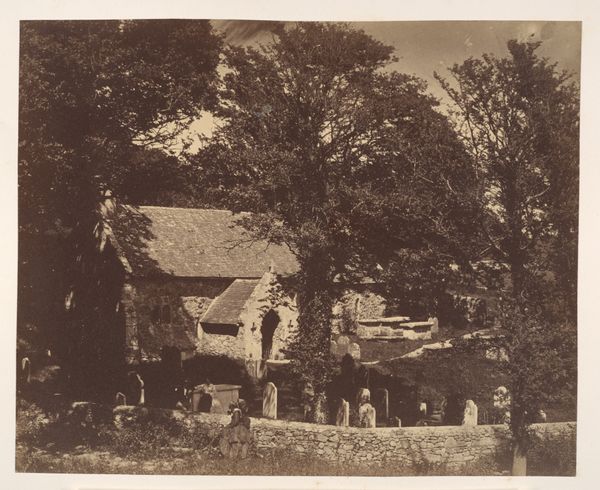![[House with Woman on Balcony, Man Standing Below] by Richard Dykes Alexander](/_next/image?url=https%3A%2F%2Fd2w8kbdekdi1gv.cloudfront.net%2FeyJidWNrZXQiOiAiYXJ0ZXJhLWltYWdlcy1idWNrZXQiLCAia2V5IjogImFydHdvcmtzLzZiOTJhNTYxLTJmMWUtNDlhNi04MDM0LWIyYzEzOGFkYmNjMy82YjkyYTU2MS0yZjFlLTQ5YTYtODAzNC1iMmMxMzhhZGJjYzNfZnVsbC5qcGciLCAiZWRpdHMiOiB7InJlc2l6ZSI6IHsid2lkdGgiOiAxOTIwLCAiaGVpZ2h0IjogMTkyMCwgImZpdCI6ICJpbnNpZGUifX19&w=3840&q=75)
[House with Woman on Balcony, Man Standing Below] 1855 - 1859
0:00
0:00
Dimensions: 15.2 x 20.6 cm. (6 x 8 1/8 in.)
Copyright: Public Domain
Editor: So this is a photograph from between 1855 and 1859 called "[House with Woman on Balcony, Man Standing Below]", and it’s attributed to Richard Dykes Alexander. The monochromatic tones give it this otherworldly feel, almost dreamlike. What jumps out at you when you look at this? Curator: The formal elements certainly resonate. Consider the composition: the rigid geometry of the house juxtaposed against the organic mass of the tree. The play of light and shadow is not merely representational; it's a structural component, delineating form and space. Note how the photographer uses tonal gradation to create depth. Editor: The depth is beautiful. It’s like the house is the focus, but there is all this activity around it! I am thinking about the emotional feel… how does it fit into romanticism? Curator: Precisely. The romanticism emerges not through narrative, but through the sublime potential of light and form. Notice how the carefully framed subject of the photograph creates tension between geometric and organic. How do these contrasting elements interplay, in your view? Editor: Well, I guess the structure grounds it, giving it stability, but that beautiful large tree adds a sense of timelessness and a bit of mystery too! So what does the architectural structure of the house mean to you in terms of photographic composition? Curator: The architecture provides a grid-like structure against which the photographer could explore ideas such as depth, shape, and linear elements, each defining space within a tightly controlled environment. We see how essential formal considerations such as structure or tone became, as well. Editor: I learned a lot! I had never considered architecture’s importance in photography regarding these elements. Curator: Indeed. Examining such structures encourages fresh interpretations.
Comments
No comments
Be the first to comment and join the conversation on the ultimate creative platform.
